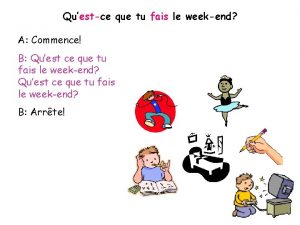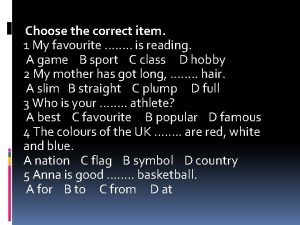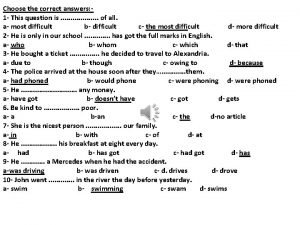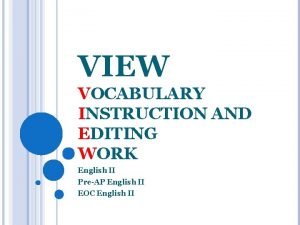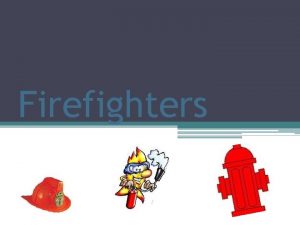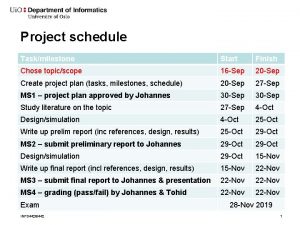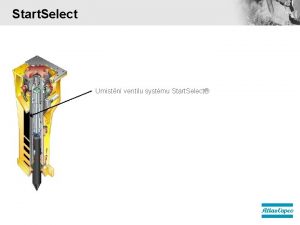INTRODUCTION To start the project we chose to














- Slides: 14


INTRODUCTION • To start the project, we chose to work on improving speaking skills. • Students completed a questionnaire regarding their views on aspects of self and peer assessment. • As a starting point, students prepared a draft presentation about the chosen topic. • This was then used as a basis for further improvement. • It was finally used as a speaking assessment.

STEP 1 – FEEDBACK VOCABULARY • Introduce the target language necessary to comment upon another student’s presentation. • Practise of vocabulary using varied activities, such as matching, Taskmagic… • Students use this to give each other feedback on their draft presentations.

EVALUATION NOM__________________________ TITRE__________________________ En général c’était bien c’était intéressant j’ai beaucoup aimé c’était un peu ennuyeux ce n’était pas bien parce que… temps Tu as utilisé les trois temps. Tu as oublié le passé/ le présent / le futur. Tu as fait des erreurs en utilisant les temps. opinions Tu as utilisé beaucoup d’opinions. Tu n’as pas utilisé assez d’opinions. raisons Tu as donné des raisons. Tu n’as pas donné de raisons. structure Tu as utilisé des expressions temporelles. Tu as varié tes phrases/ ton vocabulaire. Tes phrases étaient trop courtes. C’était trop long / trop court. prononciatio n Ta Ta Tu Tu prononciation était bonne. prononciation n’était pas exacte. as parlé trop vite / trop lentement. as trop hésité.

STEP 2 – NATIONAL CRITERIA • Presentation of new National Curriculum Levels relevant to the students ability and simplified. • Give examples of specific terms, e. g. what is a connective, give an example of a present tense etc. • Students give their draft an NC Level based on the criteria.

Level 4 You can have a short conversation. You can give your opinions. Your pronunciation is accurate. Level 5 You can have a conversation including opinions, using present and either past or future tense. You can make a few mistakes. Your pronunciation is good. You can ask and answer questions. Level 6 You can give a talk, including opinions and answering questions about it. You can talk in more details using connectives. You can vary your vocabulary and use a variety of structures. Level 7 You can answer unprepared questions. You are very accurate. You can discuss a variety of topics.

STEP 3 - MODELLING • Using prepared exemplars (video/tape) students apply the National Curriculum Levels to presentations of varied levels. • Discussion with teacher of what makes a certain level and why a certain level is awarded.

STEP 4 –PEER ASSESSMENT • Using steps 1, 2 and 3, students are given the opportunity to improve their draft presentation to a final presentation piece. • Then, in pairs, students assess each other, using the evaluation grid. • On the grid, shade or tick the relevant boxes.


STEP 5 – TARGET SETTING • Recap target language vocabulary through various activities, e. g. Taskmagic, using the ‘pour s’améliorer’ grid. • Referring to the step 4 evaluation grid, students award a National Curriculum Level to each other and choose up to three relevant targets for improvement. • Final assessment by teacher.



POSITIVE OUTCOMES • We found that using these steps improved student motivation, confidence and performance. • Improved use of target language among students. • Students more confident in judging other people’s work. • Opportunity for students to work together productively. • Possibility for students to redraft and improve presentation before final assessment. • Students knew what to include to achieve higher levels and as a result there was an improvement in levels awarded in the final assessment.

THINGS TO CONSIDER • Students may not want to be restricted to the vocabulary introduced. • Would it be more relevant to use nonnative speakers for modelling? • Include a Level 7 column in evaluation grid? • Allow enough time to practise target language.
 Site:slidetodoc.com
Site:slidetodoc.com Jump start triage algorithm
Jump start triage algorithm Image c'est le week end
Image c'est le week end Why god chose moses
Why god chose moses Ciel, air et vents, plains et monts découverts analyse
Ciel, air et vents, plains et monts découverts analyse Choose the correct item give reasons
Choose the correct item give reasons Which class chose sadako to be on the relay team?
Which class chose sadako to be on the relay team? Read and fill in the correct item a b or c
Read and fill in the correct item a b or c Toi qui dispose
Toi qui dispose Chose à savoir avant de mourir
Chose à savoir avant de mourir Chose futile
Chose futile J'ai 6 cles sans serrure si tu me gratte je murmure
J'ai 6 cles sans serrure si tu me gratte je murmure Choose the correct answer.
Choose the correct answer. Je peux tourner sans bouger qui suis-je
Je peux tourner sans bouger qui suis-je Flippant
Flippant


